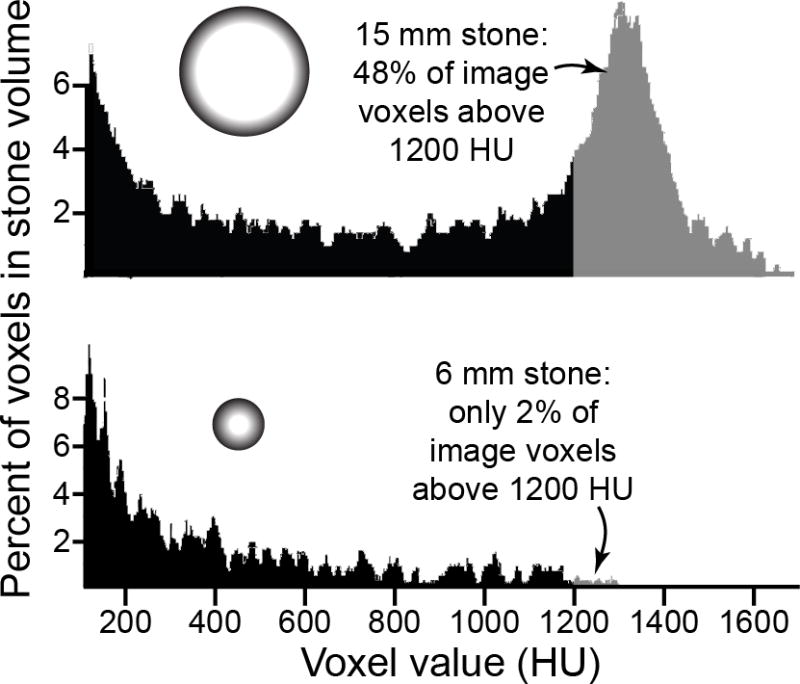FIGURE 5.

Histograms of helical CT Hounsfield unit values for two stones, based upon data from Yoshida et al. [25] (In the paper, histograms were shown, but stone size was mentioned only in the figure legend.) The larger stone apparently had a significant quantity of calcium oxalate (or perhaps calcium phosphate), as shown by the number of voxels above 1200 HU [13]. The scan of the smaller stone shows few voxels above 1200 HU, but this can be explained entirely by volume averaging. That is, the smaller stone could have been pure calcium oxalate, but still show only a few percent of voxels with high HU values, as described above in Fig. 1. The histogram of the larger stone was referred to by Yoshida et al. as having a ‘hump’ in the region greater than 1200 HU. If all stones were made of calcium oxalate, then the ‘hump’ would be an indicator of a stone being large enough that a significant portion of its volume was reported with accurately high Hounsfield units.
